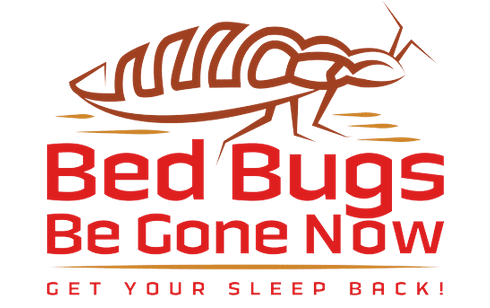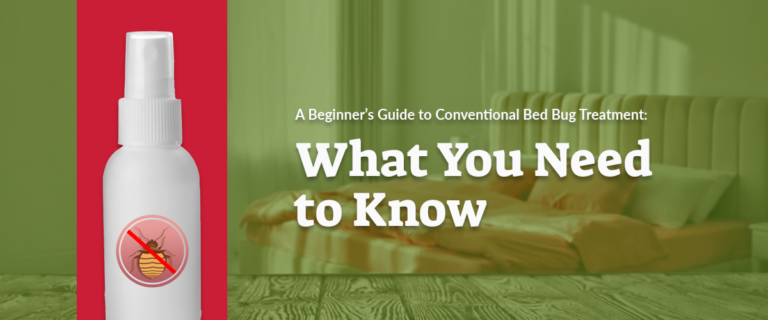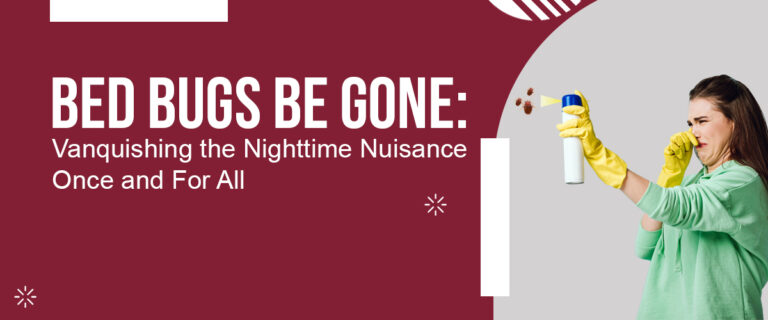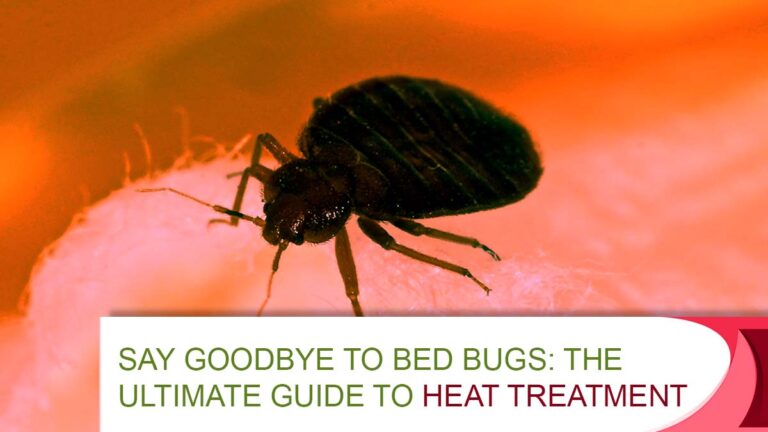DIY Bed Bug Treatment: Tips and Techniques for Eradicating Infestations
What if you woke up one day to find your bed covered in tiny, blood-sucking bugs? That’s the reality that many people face when dealing with a bed bug infestation. So roll up your sleeves because it’s time to take control and bid those unwanted bed bugs farewell. They are small parasitic insects that prey on humans and other animals while sleeping and feed on their blood. Bed bug infestations have become a prevalent problem worldwide, affecting residential and commercial properties.
Moreover, bed bug infestations can significantly impact individuals and communities, causing physical discomfort, psychological distress, and financial burdens. Understanding the importance of properly treating and preventing bed bugs is crucial to minimize their adverse effects.

Identifying and Assessing Infestations
Identification is the first step in managing a bed bug infestation and assessing the extent of the infestation. Bed bugs are minor and challenging, but several signs and symptoms can indicate their presence. Some common signs of bed bug infestations include:
- Small, red bites on the skin, often in a line or cluster
- Bloodstains on sheets and pillowcases
- Tiny black dots (bed bug feces) on mattresses, sheets, and other surfaces
- A musty odor, often described as a sweet or sickly smell
Conducting a thorough inspection of all potential hiding spots is crucial to identify the infestation’s severity accurately. It may include:
- Removing mattress covers and checking for live bugs or eggs
- Examining furniture and crevices for any signs of infestation
- Using a flashlight to inspect dark recesses and hard-to-reach areas
Determining the severity of the infestation is essential when considering DIY solutions or professional assistance. A minor infestation may be manageable with self-treatment, while a more severe infestation may require the services of a pest control professional.

DIY Solutions for Bed Bug Treatment
There are several DIY solutions for bed bug treatment that you can try before seeking professional assistance. These solutions include natural remedies and chemical treatments:
1. Natural Remedies and Solutions
For those who prefer a more natural approach to pest control, several remedies can help deter and manage bed bugs. These include:
- Diatomaceous Earth – This natural substance, made from fossilized algae, can be sprinkled around infested areas. It works by dehydrating and killing bed bugs.
- Lavender Oil – Lavender has a reputation for keeping bedbugs away. To deter these pests, use lavender essential oil on your bedding or in a diffuser.
2. Chemical Treatment Options
While natural remedies can be effective, some infestations may require more robust measures. Always follow the manufacturer’s instructions carefully and take appropriate safety precautions when using chemical treatments. These are available in various forms, including:
- Sprays
- Powders
- Aerosols
3. Proper Use of Insecticides and Tools
Using insecticides and tools effectively is crucial in the fight against bed bugs.
- Apply pesticides to cracks, crevices, and seams, where bed bugs are prone to hide.
- Vacuuming is also essential to bed bug control, as it can remove live bugs and their eggs.

Techniques for Bed Bug Eradication
In addition to DIY solutions, you can use several bed bug eradication techniques to effectively eliminate them in your home. These techniques include:
- Cleaning and Sanitation Practices – Maintaining a clean and clutter-free environment is crucial to bed bug prevention and control. Additionally, regularly launder and vacuum bedding and clothing. When cleaning infested areas, use a stiff brush to dislodge eggs and vacuum thoroughly.
- Heat Treatments – Bed bugs are sensitive to heat, and exposure to high temperatures can effectively eradicate them. You can achieve it through techniques such as steam cleaning or using specialized bed bug heaters.
- Encasements and Exclusion Techniques – Bed bug-proof encasements for mattresses and box springs can also prevent bed bugs from infesting these items. Bed bug exclusion strategies include filling up holes and fractures in furniture and walls.
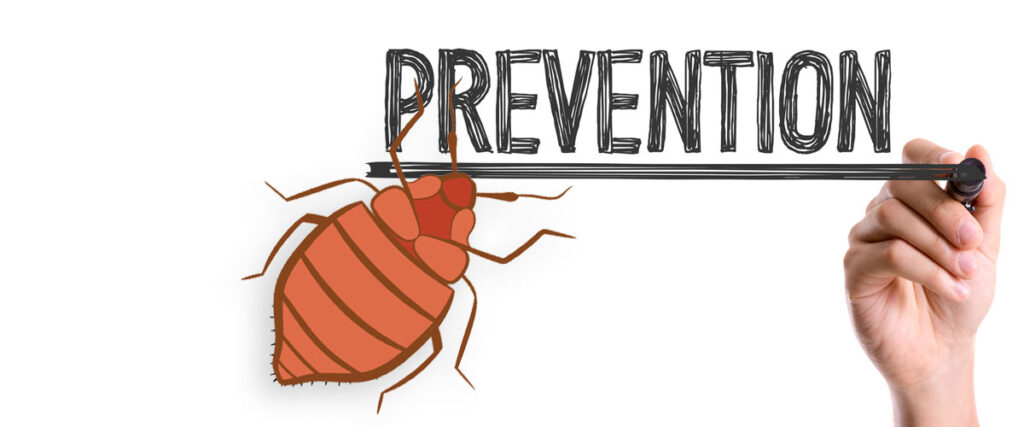
Prevention and Long-Term Management
Preventing bed bug infestations is essential for long-term management and control. The following are several strategies that you can use to prevent bed bug infestations, including:
1. Strategies for Preventing Future Infestations
Prevention is critical to avoiding the headache of dealing with bed bugs, such as:
- When traveling, look for signs of infestation in hotel rooms, and keep your luggage away from upholstered furniture like mattresses.
- When acquiring secondhand furniture, check it thoroughly before bringing it into your home.
2. Ongoing Monitoring and Maintenance
Even after successfully treating a bed bug infestation, vigilance is crucial. Continue to monitor your living spaces for any signs of resurgence, such as:
- Regularly vacuum and launder bedding
- Consider periodic professional inspections for added peace of mind.
3. The Importance of Professional Assistance and Follow-Up Services
Don’t hesitate to seek professional assistance in severe infestations or when DIY efforts prove ineffective. Additionally, the knowledge and resources available to bed bug treatment professionals in Illinois allow them to handle bed bug infestations effectively. Follow-up services can fully resolve the problem and prevent future outbreaks.
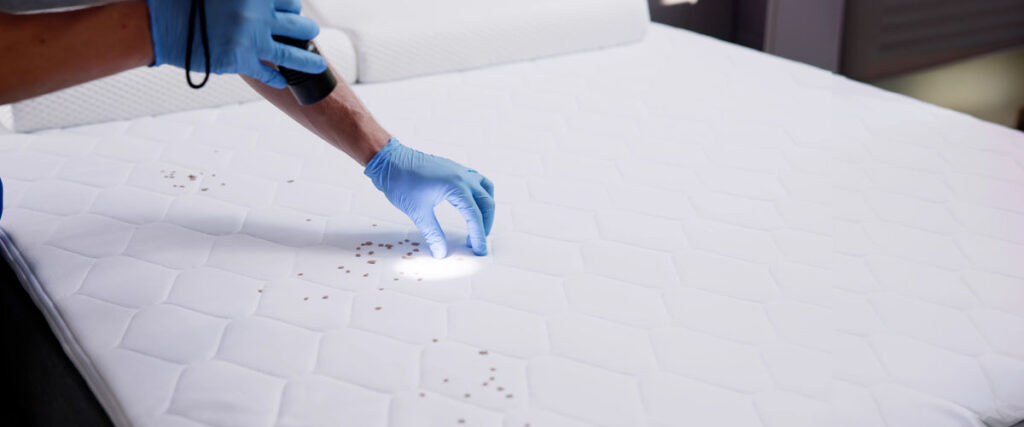
Bed Bugs, Begone: Your DIY Guide!
In summary, bed bugs can be a challenging problem to deal with. Still, there are several tips and techniques that you can use to treat and eradicate infestations successfully:
- Swiftly identify and address infestations.
- Consider DIY methods for minor infestations.
- Use chemical treatments cautiously and as directed.
- Practice effective cleaning and sanitation.
- Explore heat treatments and exclusion techniques.
- Embrace preventive measures to avoid infestations.
- Continuously monitor and seek professional help when needed.
Furthermore, prevention is always more manageable than treatment. Proactive measures can reduce the risk of bed bug infestations and ensure a peaceful night’s sleep. For extensive infestations or persistent problems, professional pest control services offer the best chance of complete eradication. Don’t hesitate to contact experts to protect your home and well-being.
References:
- Merchant, M. (2017, January 13). Bed bugs: Do-it-yourself control options. Insects in the City. Retrieved from https://citybugs.tamu.edu/factsheets/biting-stinging/others/ent-3012/
- Mundorf, D. (2023, March 6). The Ultimate Checklist For DIY Bed Bug Treatment. House Digest. Retrieved from https://www.housedigest.com/1212442/the-ultimate-checklist-for-diy-bed-bug-treatment/
